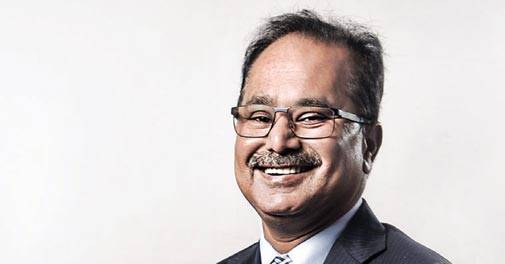Battleground US

Valganciclovir is a popular anti-viral pill in the US. It is also a good example of how the competitive landscape can change swiftly in the world of generic medicines, often triggering a sharp erosion in drug prices and resulting in declining revenues for pharmaceutical companies. Consider this: In December 2014, Dr. Reddy's, the Hyderabad-based NYSE-listed pharma major, launched the generic version of Valcyte in the US - it's the brand of Swiss major Roche for this anti-viral medication. And, as it turns out, a $100 million, high margin molecule for Dr. Reddy's has seen revenues drop to less than half. Reason: Price erosion due to increased competition. In fact, in its results for the third quarter, the company has attributed increased competition in Valganciclovir and the resultant pricing pressure as one of the primary reasons for the year-on-year decline in revenues from the US. The number of players for this drug has more than doubled and what is more, two of Dr. Reddy's major competitors - Aurobindo Pharma and Hetero Drugs - are companies from India. Also, both are from the very city where Dr. Reddy's is headquartered - Hyderabad.

Fast forward to July 18, 2016. Dr. Reddy's announces approval from the US Food and Drug Administration (USFDA) to launch omeprazole and sodium bicarbonate (an anti-ulcer and antacid combination drug) in the US. That very day, another Indian company - Mumbai-based Ajanta Pharma - is also granted approval. Both are now in the market competing with their generic versions of the Zegerid brand of Santarus Inc., a wholly-owned subsidiary of Salix Pharmaceuticals, Inc.
What these examples illustrate is how the competitive landscape is changing in the US for major Indian pharma companies. In many cases, the competition is from relatively smaller players. Some Indian pharma companies with turnovers typically less than Rs3,000 crore are building their US business and in the process starting to compete with the large companies such as Sun Pharma (total income of Rs28,984 crore in 2015/16), Dr. Reddy's (Rs15,967 crore) and Lupin (Rs14,396 crore).
Gaining Heft
The most striking example of relatively smaller companies scaling up in the US is Ajanta Pharma(Rs1,744 crore). Till the July announcement last year, it had just one product approved and commercialised in the US - Risperidone tablets (used to treat schizophrenia and bipolar disorder). "In the last 12 to 18 months, we have got some 15 product approvals," says Yogesh Agrawal, Managing Director, Ajanta Pharma. And, there are good reasons for Ajanta's enhanced focus on the US. "The US is becoming one of the important markets for us in terms of sales. This year, we will have 5 per cent to 7 per cent of our revenue from the US market as against negligible last year (Rs12 crore to Rs14 crore)." For him the recipe for success is to have a good products portfolio and then commercialise them well with good supply chain and customer service. He has little doubt about the road ahead. "Our goal is to file 8 to 10 ANDAs (abbreviated new drug applications) in the US this year and 12 to 15 next year". This strategy is not very different from that of some of the bigger companies today.

In the generics business, as most companies tell us, the choice of which drug to make and market, especially in the US, is not guided by therapeutic areas alone. In fact, it is more driven by numerous other factors such as the prevailing competitive landscape, pricing trends and the drugs most likely to get approvals. Nevertheless, talk to analysts and they see shades of turf battles in select therapy areas also playing out, even though companies are not driven by any intent to target each other. For instance, they point out that when Alembic (Rs3,156 crore) is filing for derma products, companies like Sun Pharma may need to take note - traditionally, Sun Pharma has seen this space as its strong point through Taro, its US subsidiary. Or when Alembic is filing for oncology products, it is a signal to Dr. Reddy's. Similarly, a J.B. Chemicals (Rs1,309 crore) looking to file products in antibiotics should matter to Lupin, given its strength in this segment. And this is across therapy segments and companies. So, Unichem's (Rs1,356 crore) filing of 'delayed release' products is fresh competition for Dr. Reddy's, Lupin and Zydus Cadila.
Generics Means Competition
"Generics means competition and we are all used to it. Business is fairly mature and nobody takes it personally as you may compete with a company in one product and partner with it on another," says Rajeev Nannapaneni, Vice Chairman and CEO of Hyderabad-headquartered Natco Pharma (Rs1,152 crore). The company is trying to go up the niche, with hard-to-make products, according to him. "We are focusing on delayed release products, oncology products, apart from products where there are patent challenges - para 4 products - like the exclusivity the company got for Tamiflu last year. It was filed five to six years ago but was launched in December 2016, with exclusivity till February 2017," adds Nannapaneni. Last November, Natco announced the USFDA approval for launching the generic version of Budesonide capsule in the delayed or sustained release category. Natco has a partner, Alvogen, for this. One of the big generic players in this space from India is Dr. Reddy's. "We target six to eight filings in a year as against the bigger players, who do 25 to 30 in a year. Also, in our model, we share costs with our distribution partners. Typically, we work with four to five partners," says Nannapaneni. "About 50 to 60 per cent of the capex now for Natco is targeted at growing the US business. The investments are for building factories in India to cater to the US market and for R&D."

These, clearly, are challenging times for Indian pharma companies due to surge in competition, say analysts. "This market is going through transformation, both from the competitive angle with more players reducing the pool of available patented products where generic product launch opportunities could be explored, and from the regulatory angle. These companies need to be really efficient in identifying their products, supported by a number of them in the portfolio. If not, they will need a partnership," says Surajit Pal, analyst at Prabhudas Lilladher. He also feels that it's important for companies to enter some niche areas quickly and have differentiated offerings.
Watching the Developments
The larger players are keeping an eye on the growing competition from smaller rivals. "Competition is coming from various angles and as the industry is maturing the smaller companies are also filing ANDAs and coming in. It is emerging and it is not like we can ignore them. Our reaction will be to hold on to our market shares where we are early as long as it is profitable and move up the value chain," says G.V. Prasad, co-Chairman and CEO of Dr. Reddy's. The bigger companies can invest a lot more in R&D and move up the value chain in terms of portfolio complexity and portfolio uniqueness, asserts Prasad. "It is becoming difficult for companies that are coming in late to gain market share because there are very few (large) and highly concentrated customers," adds Prasad. But then, it is not as if other players are not aware of this. Ajanta, for instance, plans to climb up the value chain and look at oncology and ophthalmic sterile products along with dermatology. "The advantage for mid-size companies like ours is that we are able to give more attention to these products," says Ajanta's Agrawal.

Analysts have been seeing this trend for the last three years, and it is expected that the smaller pharma companies will see their US revenues grow rapidly. Consider Indoco Remedies (Rs1,005 crore). Just five years ago, the domestic business used to be 65 per cent of its top line. Today, it is 50 per cent. "The US becomes significant for everyone because of its size. Even when you talk of blockbusters or small molecules. Even the smallest of molecules give you size and it's the beauty of that market," says Aditi Kare Panandikar, MD, Indoco Remedies. Its choice of therapy segments includes cardio, diabetes, CNS (central nervous syste), apart from ophthalmology and sterile. Typically, she says, "Companies successful in markets like India are also those that have the ability to take the pressure of long gestation periods in the US." What does she think of buyer consolidation and market entry challenges? "The US market is very different. It is dominated by a few (about four) wholesalers (or chains that source generic drugs) but then there is the government supply, insurance agent companies," she says.

Saion Mukherjee, analyst at Nomura Financial, sums it up well: "It will all depend on how these relatively smaller companies make their business sustainable. A lot of things have to fall in place for this for them - be it getting the product selection right, besides getting the quality, manufacturing, supply chain, execution and timing right. However, what runs in their favour is that these smaller companies may not have to deal with some of the legacy issues on quality and regulatory matters that some old and big plants tend to carry." They could thus have the benefit of running the ship better from day one.
@EKumarSharma










